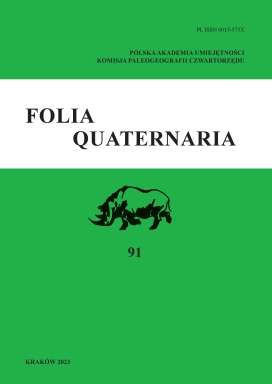A contribution to the study of meat consumption by the wealthy burghers of Słupsk (Middle Ages to modern times)
A contribution to the study of meat consumption by the wealthy burghers of Słupsk (Middle Ages to modern times)
Author(s): Urszula Iwaszczuk, Maciej MarczewskiSubject(s): Social history
Published by: Wydawnictwo Uniwersytetu Jagiellońskiego
Keywords: animal remains; meat consumption; wealthy burghers; late medieval period; modern times;
Summary/Abstract: During archaeological research of the Old Market Square in Słupsk, cultural strata and architectural relics related to various phases of the market’s development were discovered. The oldest remains date back to the pre-location period; the youngest come from the beginning of the 20th century. The original Gothic town hall was made of brick in the 14th century, accompanied by small wooden annexes. The structure was significantly damaged by the great fire of 1477, after which it had to be partially demolished, renovated and expanded. At the end of the 18th century, all existing buildings were destroyed, the area was lowered, and a new, smaller town hall was built. The last reconstruction of the town hall took place in 1901. The excavations in this area documented 1,179 fragments of animal remains. Due to the complexity of the area’s history and high number of uncovered structures, the remains were analysed chronologically. Their analysis aims to understand the burghers’ meat diet and briefly examine the state of animal husbandry in and around the city from medieval to modern times. The research showed the high importance of livestock, mainly species such as cattle and pigs that provide a large amount of meat. Remains of poultry, especially chicken and geese, were also relatively abundant. Discovery of the remains of the domestic turkey Meleagris gallopavo domesticus in 17th- and 18th-century contexts appears to be of great interest, as they were the leftovers from the luxurious meals at the tables of the burghers. Additionally, a surprising assemblage of corvid bird bones was found in a layer of decayed wood dating to the 18th–19th century, which consisted almost exclusively of the tarsometatarsus bones of a rook (Corvus frugilegus) and a raven (Corvus corax), found along with a skull of a passerine. This find could be associated with some unknown magical rituals; the bones may have also been collected as trophies.
Journal: Folia Quaternaria
- Issue Year: 2023
- Issue No: 91
- Page Range: 5 - 30
- Page Count: 26
- Language: English

